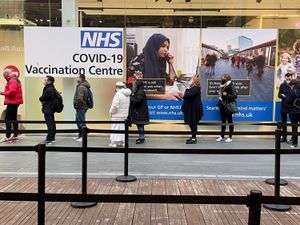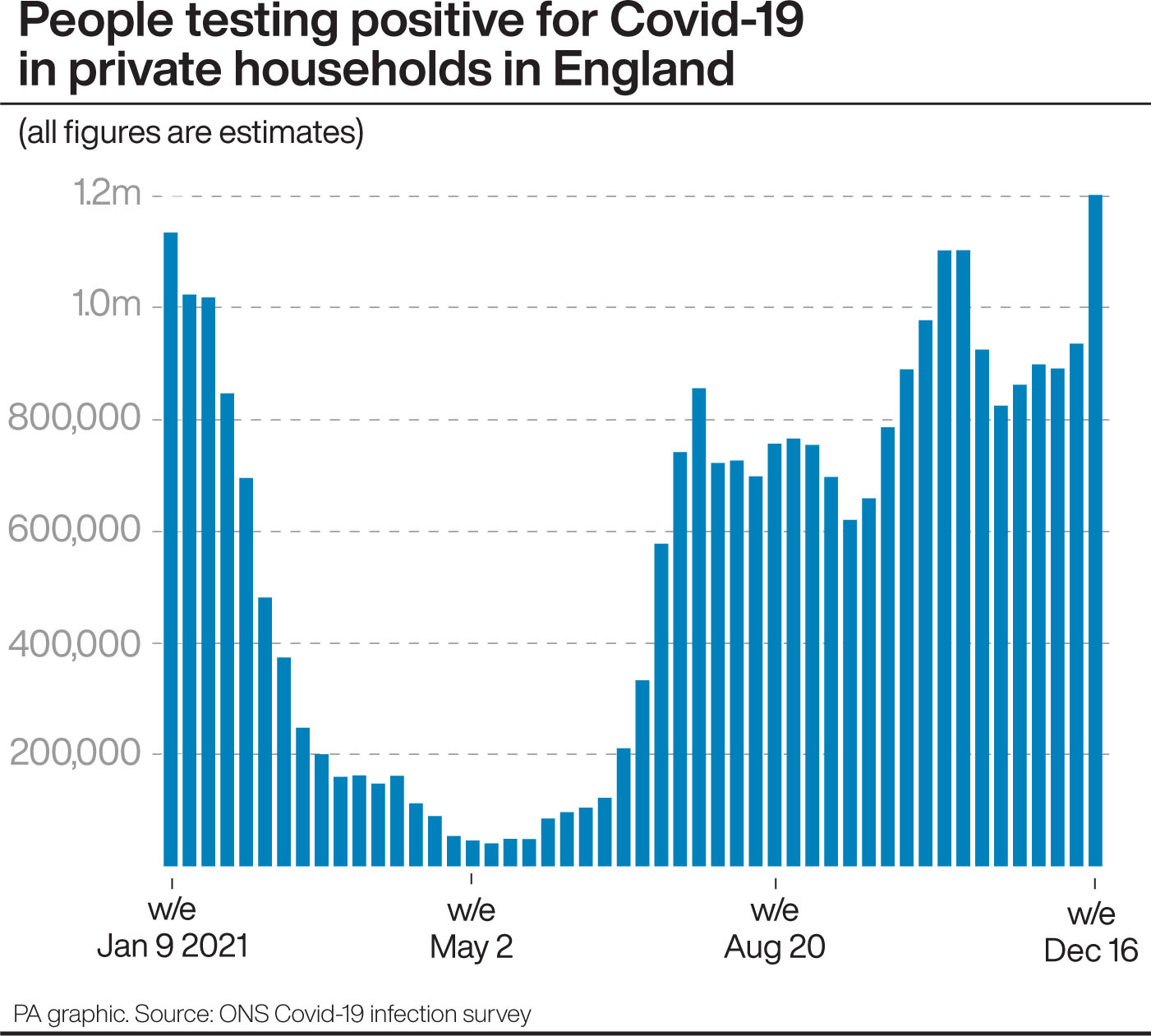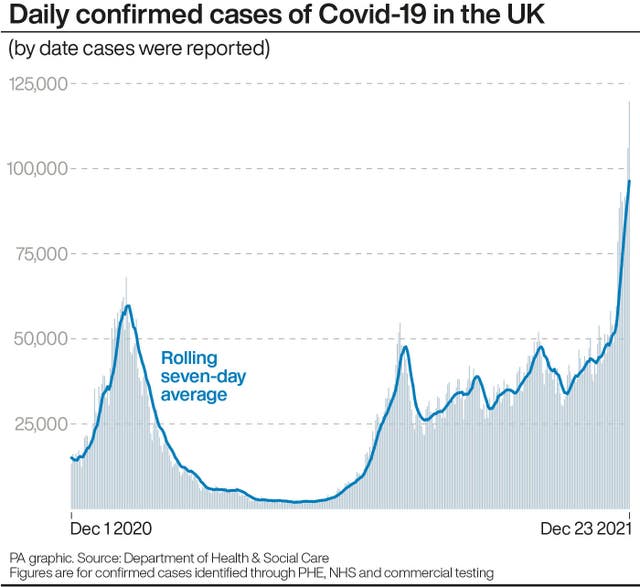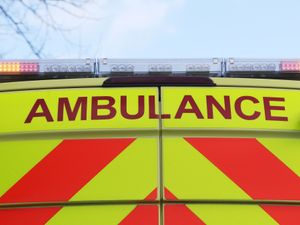Covid-19 in the UK: All the key data
A summary of the latest figures released before Christmas.

A large amount of Covid-19 data has been published on Thursday ahead of Christmas, including the latest infection levels, antibody estimates, absences for hospital staff and local vaccine take-up, along with the usual daily numbers for cases, hospital admissions and deaths.
Here is a summary of all the key figures:
– UK vaccinations
A total of 840,038 booster and third doses of Covid-19 vaccine were reported in the UK on Wednesday – the lowest daily figure since December 15.
Some 31,684,926 booster and third doses have now been delivered in the UK, with 6,207,581 in the past seven days.
The total number of first doses of vaccine now stands at 51,617,091, while the total for second doses is 47,210,053, Government figures show.

– Covid-19 infection levels
Nearly 1.4 million people in private households in the UK had Covid-19 in the week ending December 16, the highest estimate since comparable figures began in autumn 2020, according to the Office for National Statistics (ONS).
This includes just over 1.2 million people in England, or around one in 45 – up from one in 60 in the previous week.
In London, the latest estimate is even higher, at one in 30.
In Wales, around one in 55 people is estimated to have had Covid-19 in the week to December 16, unchanged from the previous week, while in Northern Ireland the latest estimate is one in 50 people, also unchanged from the previous week.
For Scotland, the latest estimate is one in 70, up from one in 80.

– Cases and deaths
There were 119,789 new cases of Covid-19 in the UK reported on Thursday: the highest number reported on a single day since the pandemic began.
Case numbers reported in the first wave of the pandemic in spring 2020 underestimated the true scale of the virus, as only a small number of people were being tested, mostly in hospitals and care homes.
But the latest total is far higher than any of the daily figures reported during the second wave last winter.
The average number of Covid-19 deaths reported each day currently stands at 112, down from 115 a week ago and 122 at the start of December. These figures include only those people who died within 28 days of testing positive for coronavirus.

– Test and Trace
A record 464,667 people tested positive for Covid-19 in England at least once in the week to December 15, up 47% on the previous week, according to the latest Test and Trace figures.
This is the highest number to test positive in a single week since the Test and Trace scheme began in May 2020.





